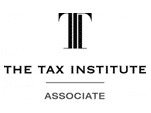Trusts are effective structures for business, investment, and wealth generation however they are not simply ‘set and forget’ structures. The laws of trusts has had limited changes over recent years however interpretations of trusts by the Australian Taxation Office and the courts has changed. As a result trustees and their advisors must constantly revisit trust deeds to ensure unintended outcomes are not triggered.
As we near the end of the financial year, trustees will be starting to consider the amount of distributable income or taxable capital gains trust beneficiaries should receive. Trustees should be considering their obligations (if any) to make distributions and how to correctly prepare and execute distribution minutes. Failure to prepare appropriate resolutions that are in line with the trust’s deed on or prior to 30 June each financial year may result in the trustee paying tax at the highest marginal rate (45%) on ALL income and gains retained in the trust.
In this article we discuss six key steps that trustees should be taking when considering and making year end distributions.
STEP 1: Determine what exactly you can distribute
What constitutes distributable income of a trust is generally determined by the terms of the trust’s deed. However, often such definitions vary which may have significant implications for trustees who do not appropriately interpret and apply them. Three common scenarios we see in practice are:
- Restrictive: Deeds with clauses that exclude certain types of income. In this situation, the trustee must consider which, if any, other clauses permit distribution. It may be worthwhile to consider the powers the trustee has to vary the terms of the trust to remove unwanted or unworkable restrictions before year end.
- Narrow: Often the narrowness of these clauses is difficult to identify. For example, the deed may define income as “receipts which would be assessable to the trustee”. If tax concessions can be applied to reduce an assessment in part or full then this definition may not capture the whole of the receipts and a trustee may inadvertently fail to distribute a gain.
- Broad: Some deeds may include a broad definition of income and may even permit a trustee to determine what constitutes income. Trustees must carefully consider what income or receipts, actual or notional, the trust has received and ensure the distribution resolution correctly reflects their determination and then allocation amongst the beneficiaries.
STEP 2: Ensure “real and genuine” consideration is given to beneficiaries
- In Owies v JJE Nominees Pty Ltd [2022] VSCA 142 (Owies) the Victorian Supreme Court of Appeal determined that trust distributions were voidable (i.e. capable of being set aside) on the basis that the trustee had failed to give real and genuine consideration of two of the specified beneficiaries of the trust. The Court noted the trustee’s lack of active consideration of those beneficiaries and found this to be in breach of the trustee’s fiduciary duties.
- The courts have historically accepted that such consideration does not need to be given to every single potential beneficiary for practicality reasons. Most family trust deeds have a large class of beneficiaries. Owies concerned specified beneficiaries only and the extent to which the courts may extend the obligations of a trustee to actively consider all general beneficiaries, particularly where the specified beneficiaries are deceased, is untested and a matter of concern.
- Nevertheless the landmark decision serves as a warning to all trustees of discretionary trusts, hybrid trusts and SMSF’s without legally binding death benefit nominations from its member(s), that their discretion may not be as wide or unfettered as often thought. Real and genuine consideration must be given to beneficiaries financial, health and other relevant circumstances and trustees should ensure that they actively inform themselves, before making a distribution, of such matters relevant to that decision.
- The Owies decision is of particular importance to families with strained relationships or where distributions are to be made to only select members of a class of beneficiaries (be they specified, primary or general). In such circumstances trustees should actively inform themselves before making decisions and seek professional advice to minimise the risk of a costly and protracted court challenges to distributions, which can occur many years after distributions have been made.
STEP 3: Consider section 100A and ensure presently entitled beneficiaries will actually receive the benefit of the distribution
- In the 2023 financial year the ATO provided its position on the application of section 100A. Section 100A is an anti-avoidance provision which seeks to target arrangements whereby distributions are made to a low taxed beneficiary, but the benefit of the distribution (i.e., the cash) is in fact provided to a different beneficiary who would, if distributed directly to, be assessed at a higher rate of tax. Such arrangements, referred to as reimbursement agreements, can result in the ATO taxing the net income to the trustee at the highest marginal tax rate.
- Section 100A does not apply in certain circumstances such as when the reimbursement agreement arises out of ordinary family or commercial dealings. The ATO has sought to narrow these terms in the cases of Commissioner of Taxation v Guardian AIT Pty Ltd ATF Australian Investment Trust [2023] FCAFC 3 (Guardian) and BBlood Enterprises Pty Ltd v FCT [2022] FCA 1112 (Bblood).
- An understanding of section 100A, Guardian and Bblood is essential for trustees. If you are unsure as to the implication of these decisions professional advice should be sought. Particularly as for s.100A assessments the time limit for amendment is
STEP 4: Consider the residency of beneficiaries and the impact this may have
- Trust deeds often contain clauses that limit distributions of income and/or capital to non-resident beneficiaries to avoid foreign purchaser and surcharge duty and land tax. Distributions that breach these clauses are invalid and therefore trustees should carefully review deeds and any variation(s) before making distributions.
- Recently, Revenue NSW clarified that distributions made to residents of New Zealand, Finland, Germany and South Africa will not cause a trust to be subject to foreign purchaser duty or surcharge land tax. If you have paid surcharge duty a refund may be applicable. However existing clauses which make the trust a non-foreign trust for NSW stamp duty and land tax purposes were required to be irrevocable and therefore cannot now be removed where distributions are intended to be made only to New Zealand, Finland, Germany or South Africa resident beneficiaries. Where trustees wish to distribute to residents of those countries consideration should be given as to potentially restructuring assets.
- In addition to state duty and tax concerns beneficiaries should also consider their federal tax obligations. For example, the Full Federal Court’s decision in Peter Greensill Family Co Pty Ltd (Trustee) v Commissioner of Taxation [2021] FCAFC 99 highlighted the complexity of the taxation of distributions to non-resident beneficiaries.
- It is prudent at this point to acknowledge section 99B. Section 99B was introduced several decades ago to prevent tax evasion by individuals who accumulate foreign income in foreign trusts, intended for direct or indirect use and enjoyment by Australian beneficiaries. The ATO has recently indicated that intends to focus greater attention on the application of section 99B. This has raised concern in the tax industry due to its potentially broad application. While there are exemptions from its operation, they are limited in nature. It is essential to stay informed about these developments where receiving payments from foreign trusts and the potential implications for your responsibilities under Australian tax law.
STEP 5: Review whether any beneficiaries have effectively disclaimed their interest
- A beneficiary may disclaim their interest in a trust, meaning that they will not receive any future distributions. Careful drafting of these disclaimers is vital to ensure their effectiveness as is the timing of their execution.
- In Commissioner of Taxation v Carter [2022] HCA 10 the High Court found that the beneficiaries’ disclaimers made in September 2016 regarding a default trust entitlement arising at the end of the 2014 income year, were ineffective for tax purposes as they were not executed prior to the relevant year end. Timing of disclaimers is therefore key.
- Many discretionary trusts have such self-executing default beneficiary entitlement clauses. Hence this is another trap to carefully consider before financial year end.
STEP 6: If distributing to corporate beneficiaries, consider Division 7A
- It is important for trustees to remember that distributions made to corporate beneficiaries will be deemed “financial accommodation” and treated as loans and subject to Division 7A if acknowledged and not paid by the end of the financial year.
- The ATO’s recent guidance on this can be found here. The time periods formally allowed under TR 2010/3 and Law Administration Practice Statement PS LA 2010/4 no longer apply to trust distributions made on or after 1 July 2022.
- Where the deed of a trust permits funds to be held on sub-trust Division 7A may not apply. However, in these circumstances funds must be held separately from the main trust funds and for the exclusive benefit of the company. The funds are not accessible to the trust the attractiveness / utility of sub-trust is arguably diminished.
If you have any questions about end of year trust distributions, please contact our Tax & Structuring team for assistance.
This article was written by Sophie Barber (Lawyer), Laura Spencer (Senior Associate), and Jack Stuk (Principal Solicitor).
This article was first published in the Thomson Reuters Weekly Tax Bulletin (Edition 022) on 26 May 2023.









